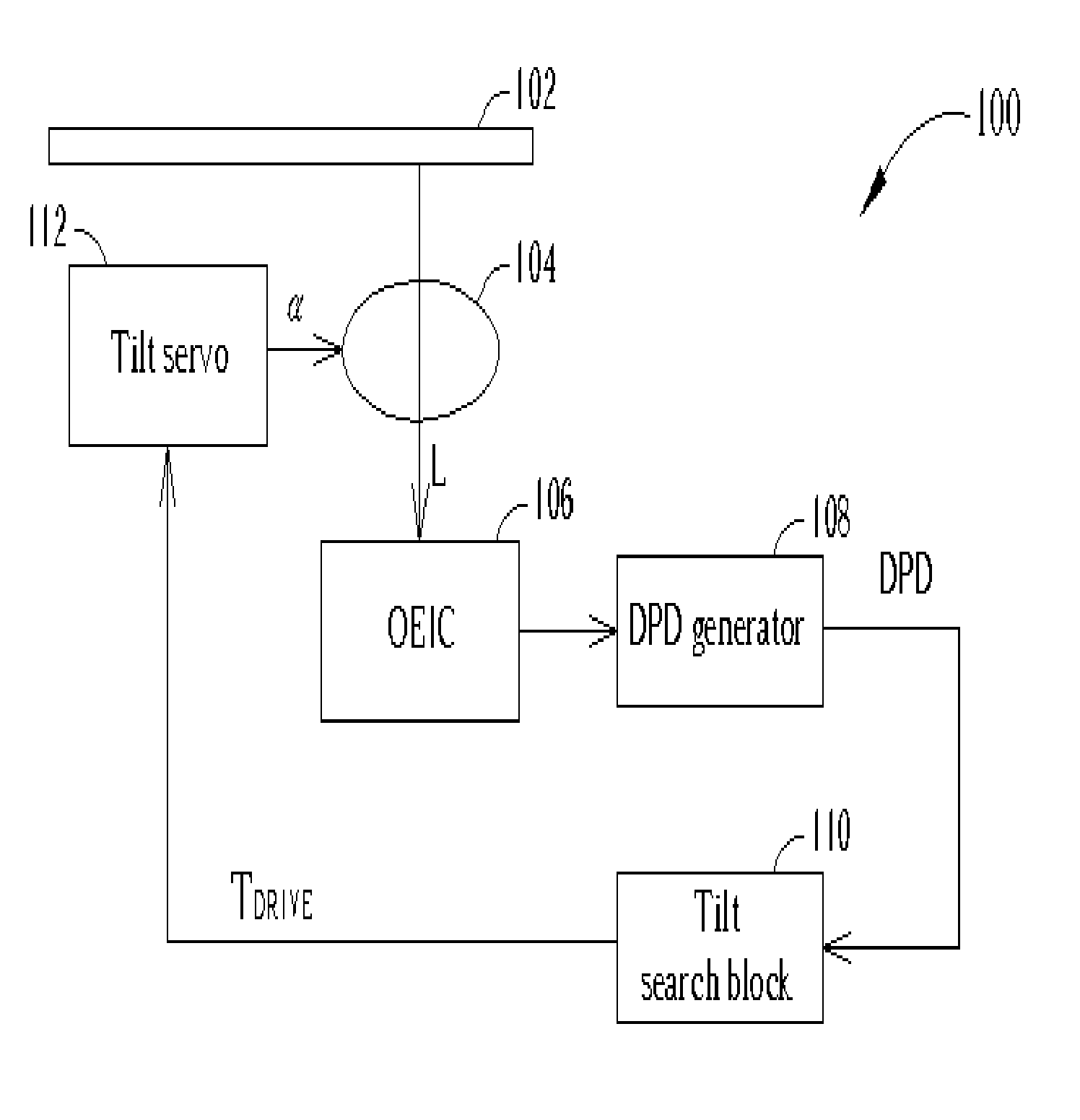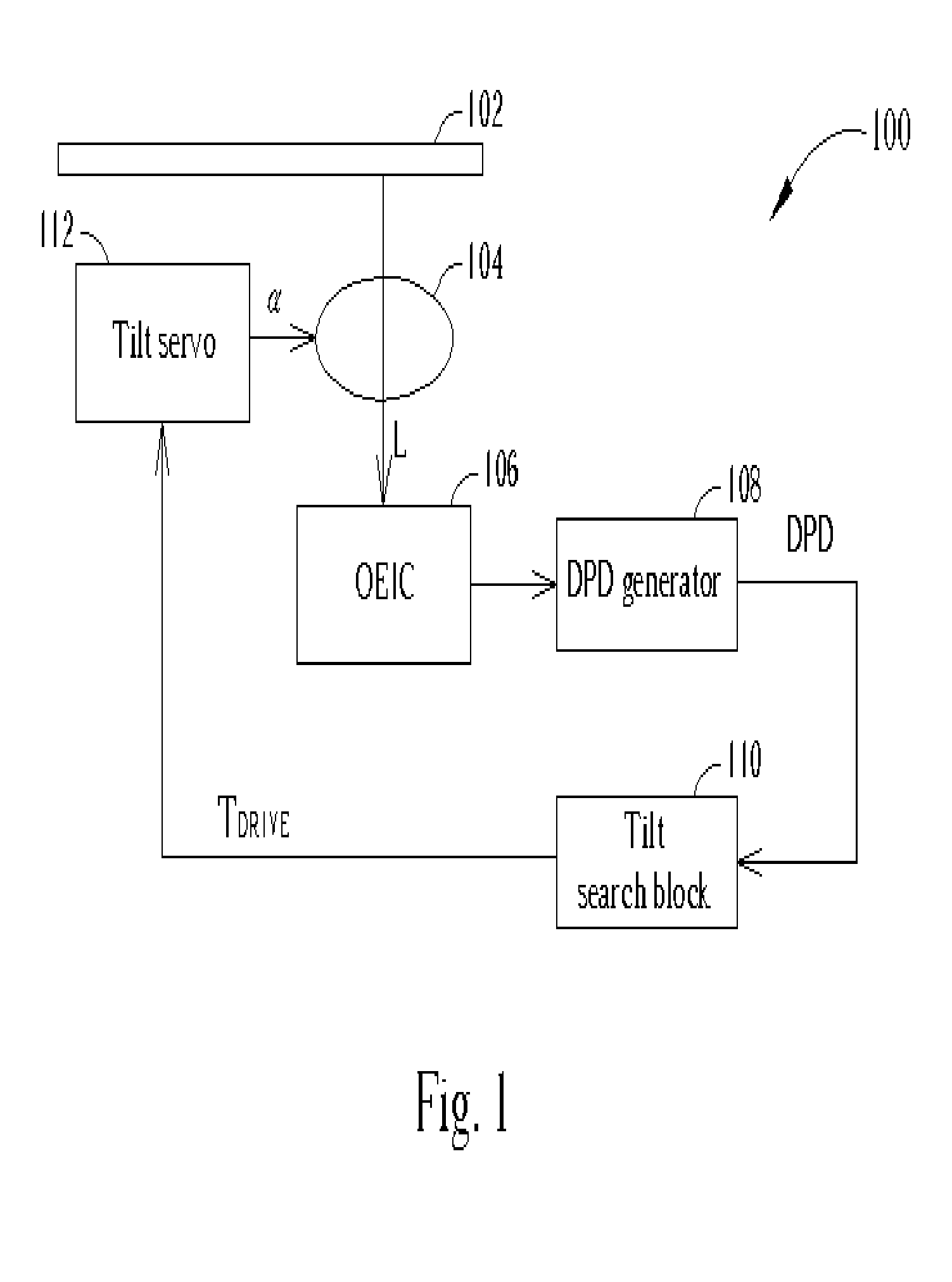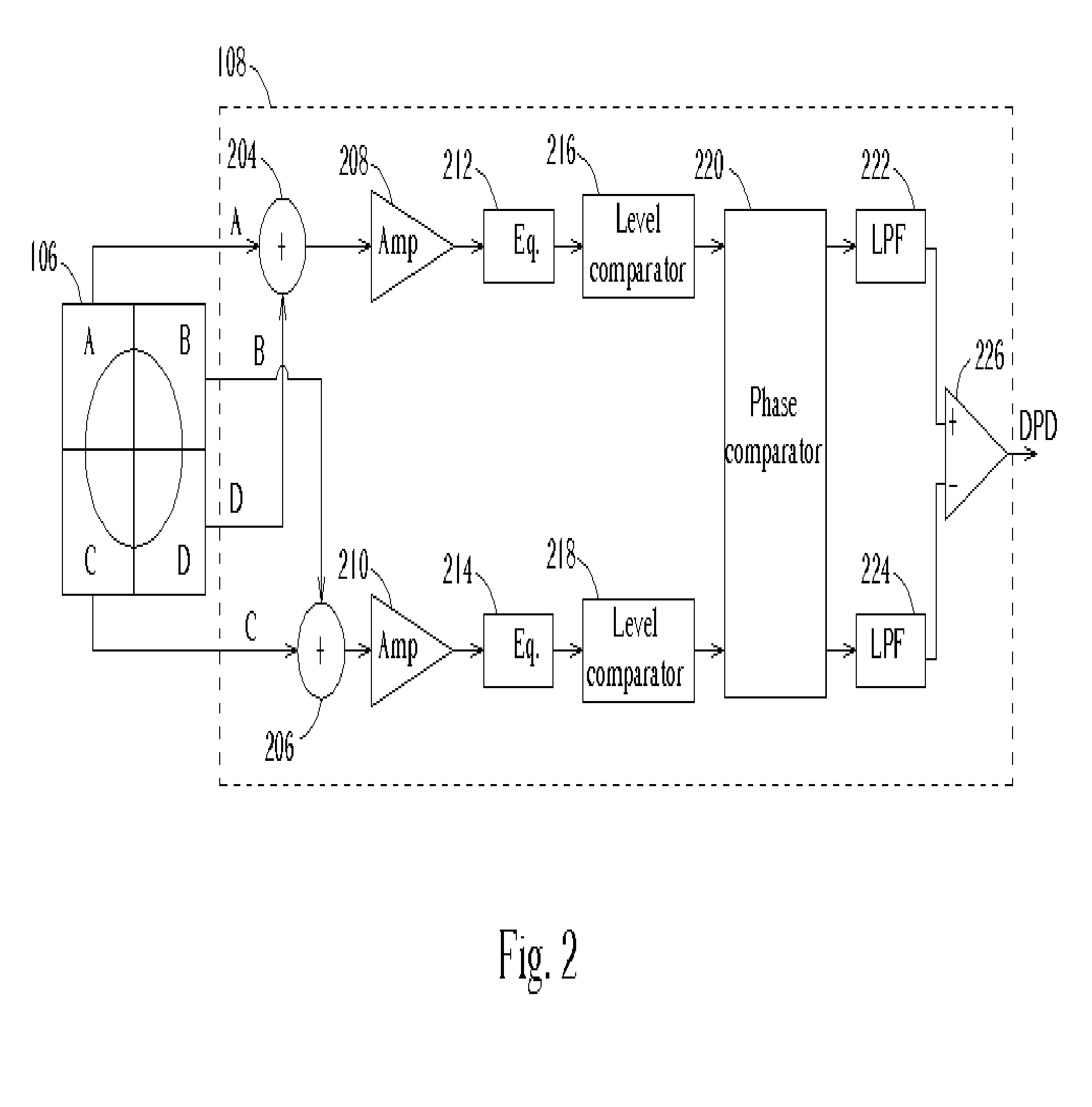Optical disc system and associated tilt angle calibration method
a technology of optical discs and tilt angles, applied in the field of optical disc systems, can solve the problems of lowering the quality of the optical disc system, difficult to perfectly align these two light beams, and the inability of the optical sensor to accurately reproduce encoded data
- Summary
- Abstract
- Description
- Claims
- Application Information
AI Technical Summary
Benefits of technology
Problems solved by technology
Method used
Image
Examples
Embodiment Construction
[0020]FIG. 1 shows a block diagram of an optical disc system 100 according to the first embodiment of the present invention. The optical disc system 100 comprises an optical disc 102, an object lens 104, an optical electrical integrated circuit (OEIC) 106, a differential phase detection (DPD) signal generator 108, a tilt search block 110, and a tilt servo 112. Incident light is reflected off the optical disc 102 at a tilt angle controlled by the tilt servo 112. The tilt servo 112 receives a control signal TDRIVE from the tilt search block specifying a tilt angleα between the optical disc 102 and the object lens 104. The tilt servo 112 controls the tilt angleα. Reflected light L passes through the object lens and is detected by the OEIC 106. The OEIC 106 is an optical sensor that generates electrical signals according to the reflected light L. The DPD signal is a common signal required in optical disc systems and the DPD signal generator 108 generates this DPD signal according to the...
PUM
| Property | Measurement | Unit |
|---|---|---|
| tilt angle | aaaaa | aaaaa |
| tilt angle | aaaaa | aaaaa |
| tilt angle | aaaaa | aaaaa |
Abstract
Description
Claims
Application Information
 Login to View More
Login to View More - R&D
- Intellectual Property
- Life Sciences
- Materials
- Tech Scout
- Unparalleled Data Quality
- Higher Quality Content
- 60% Fewer Hallucinations
Browse by: Latest US Patents, China's latest patents, Technical Efficacy Thesaurus, Application Domain, Technology Topic, Popular Technical Reports.
© 2025 PatSnap. All rights reserved.Legal|Privacy policy|Modern Slavery Act Transparency Statement|Sitemap|About US| Contact US: help@patsnap.com



